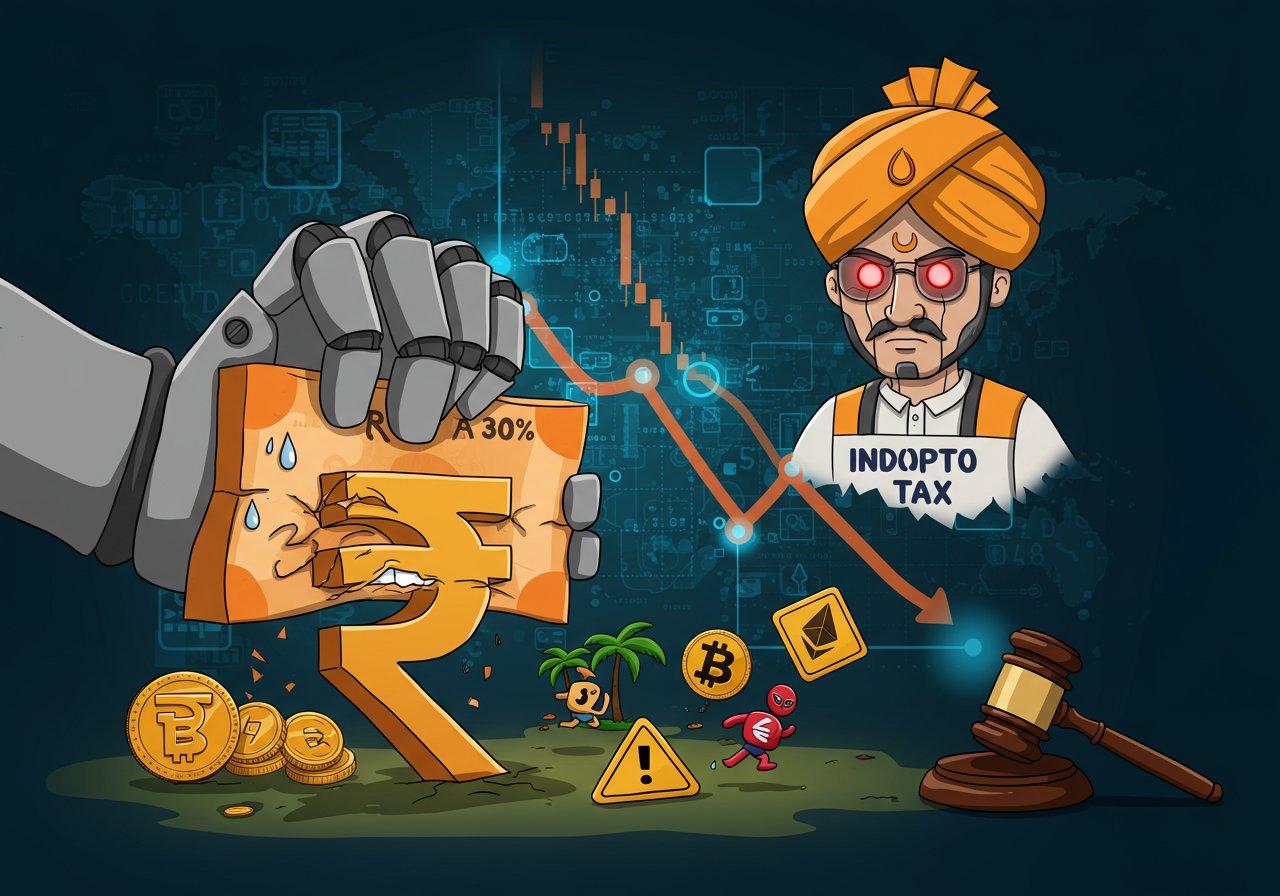
India‘s Cryptocurrency Tax Landscape: A Deep Dive
The Indian government’s approach to taxing cryptocurrencies has created a complex environment for digital asset investors. While the 30% flat tax on gains may seem like the headline, a closer look reveals a web of regulations that pose significant challenges. This article explores the nuances of India‘s crypto tax regime, its impact on the market, and the potential for change.
The 30% Tax and Beyond
The cornerstone of India‘s crypto taxation is the 30% flat tax rate on gains derived from selling virtual digital assets (VDAs), as outlined in the Finance Act 2022 and maintained in the Union Budget 2025. However, the repercussions extend far beyond this seemingly simple figure. A 1% Tax Deducted at Source (TDS) is levied on VDA transactions exceeding 10,000 Indian rupees (approximately $115), a measure intended to monitor and track transactions. Additionally, a 4% cess is applied to the total tax liability, compounding the financial burden.
Reporting Requirements and Compliance
The Indian government has implemented enhanced reporting requirements to ensure transparency. For the financial year 2025-26, individuals and businesses must declare crypto profits within Schedule VDA of their Income Tax Return (ITR). Furthermore, exchanges are mandated to share detailed transaction data with tax authorities. These measures aim to curb tax evasion and ensure compliance, but they also create a significant administrative overhead for traders.
Unfavorable Treatment of Losses and Deductions
One of the most significant drawbacks of the Indian crypto tax regime is the lack of provisions for offsetting losses. Unlike traditional investments, where losses can be used to reduce tax liability, the 30% tax is applied without allowing deductions beyond the purchase cost. This can result in unfavorable outcomes, especially during market downturns, where traders cannot mitigate losses across different cryptocurrencies or against other income sources. Moreover, there’s no distinction between short-term and long-term holdings, with the flat 30% rate applying regardless of the holding period.
The Impact on the Indian Crypto Market
The stringent tax framework has significantly impacted the Indian crypto market. The 1% TDS, in particular, has driven trading activity to offshore exchanges, resulting in revenue losses for the Indian government and hampering the growth of local platforms. Indian exchanges have witnessed substantial drops in trading volume and user activity, while foreign platforms have experienced increased activity. This shift has also created hesitancy among investors, who are wary of government scrutiny and the perceived risks associated with domestic exchanges.
Comparing India to Other Nations
India‘s crypto tax system is among the most restrictive globally. In stark contrast, countries like Singapore and Dubai have adopted more lenient policies, attracting investors and businesses with tax exemptions and clearer regulatory frameworks. Other nations, such as Brazil, impose uniform rates, while some European Union countries offer progressive rates and various tax reliefs. This disparity highlights the Indian government’s approach, which prioritizes revenue collection over fostering innovation and growth in the digital asset sector.
The Road Ahead for Indian Crypto
Despite the current challenges, there is a glimmer of hope for the Indian crypto market. Discussions at global forums like the G20 Summit suggest a potential for policy change. Industry stakeholders are cautiously optimistic that the government may consider reducing the 1% TDS and the 30% capital gains tax, which could revitalize domestic trading volumes and enhance India‘s position in the global crypto market. Recent developments indicate that regulators may be open to adjustments, potentially leading to reforms that could foster innovation and rebuild investor confidence in the Indian crypto sector.


